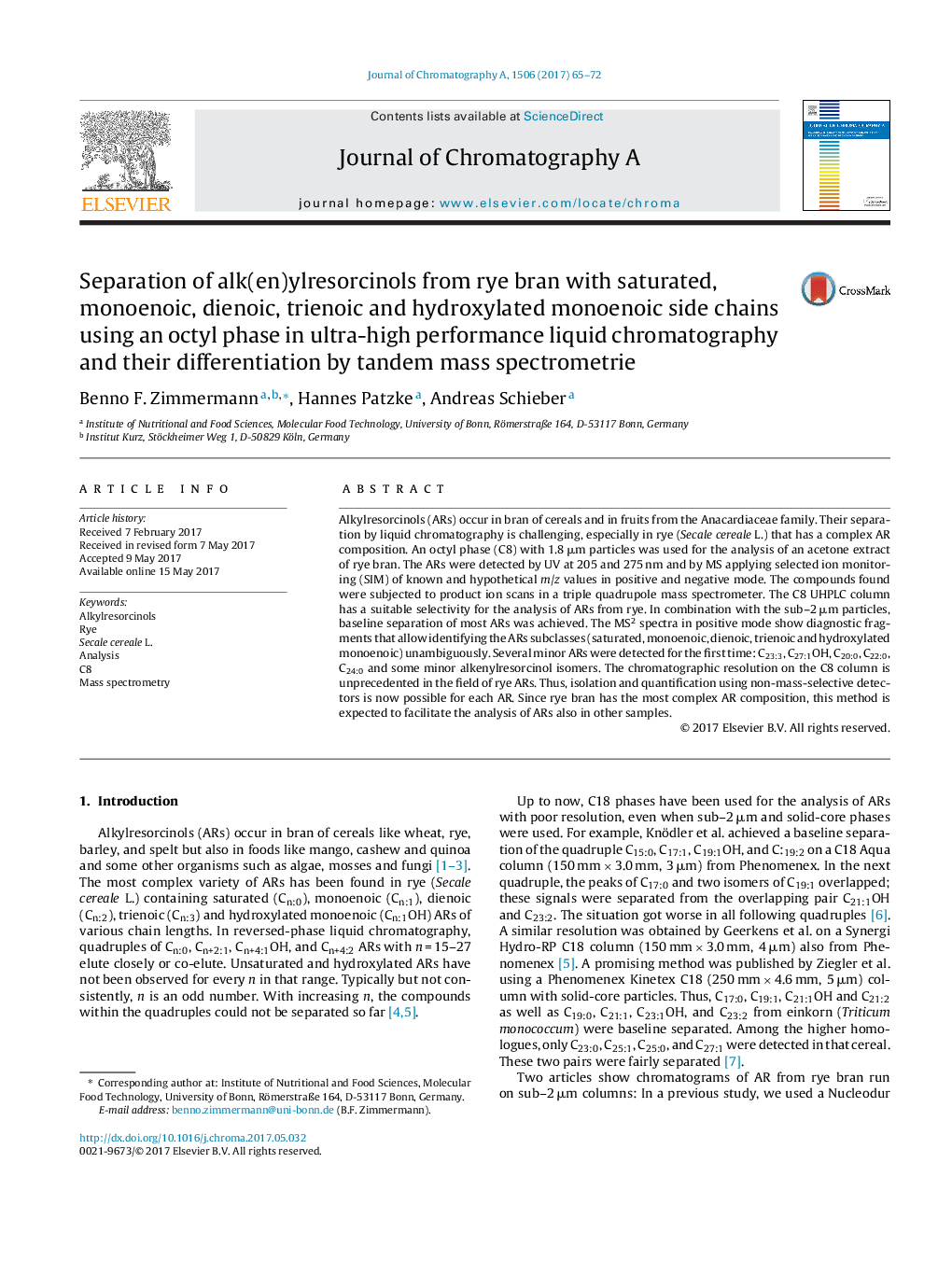| Article ID | Journal | Published Year | Pages | File Type |
|---|---|---|---|---|
| 5135214 | Journal of Chromatography A | 2017 | 8 Pages |
â¢A break-through in alkylresorcinol chromatography.â¢Separation of saturated, monoenoic, dienoic, trienoic and hydroxylated monoenoic alkylresorcinols.â¢Use of a octyl phase with 1.8 μm particles.â¢Triple-quadrupole MS yields specific spectra of the alkylresorcinol subclasses.
Alkylresorcinols (ARs) occur in bran of cereals and in fruits from the Anacardiaceae family. Their separation by liquid chromatography is challenging, especially in rye (Secale cereale L.) that has a complex AR composition. An octyl phase (C8) with 1.8 μm particles was used for the analysis of an acetone extract of rye bran. The ARs were detected by UV at 205 and 275 nm and by MS applying selected ion monitoring (SIM) of known and hypothetical m/z values in positive and negative mode. The compounds found were subjected to product ion scans in a triple quadrupole mass spectrometer. The C8 UHPLC column has a suitable selectivity for the analysis of ARs from rye. In combination with the sub-2 μm particles, baseline separation of most ARs was achieved. The MS2 spectra in positive mode show diagnostic fragments that allow identifying the ARs subclasses (saturated, monoenoic, dienoic, trienoic and hydroxylated monoenoic) unambiguously. Several minor ARs were detected for the first time: C23:3, C27:1OH, C20:0, C22:0, C24:0 and some minor alkenylresorcinol isomers. The chromatographic resolution on the C8 column is unprecedented in the field of rye ARs. Thus, isolation and quantification using non-mass-selective detectors is now possible for each AR. Since rye bran has the most complex AR composition, this method is expected to facilitate the analysis of ARs also in other samples.
